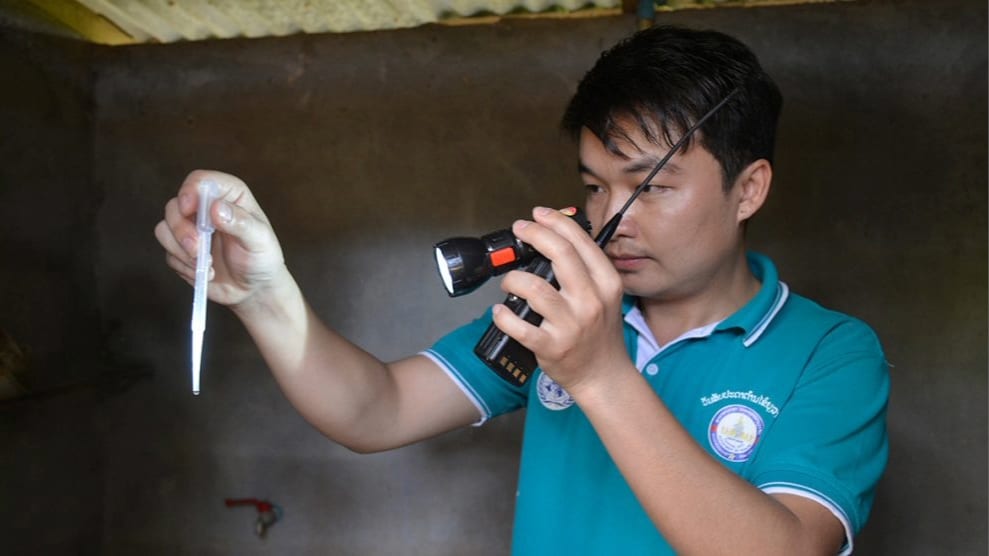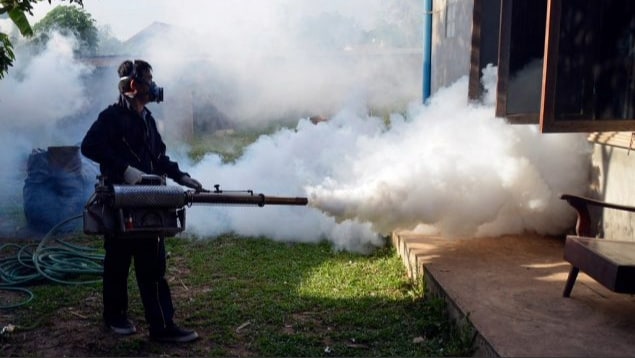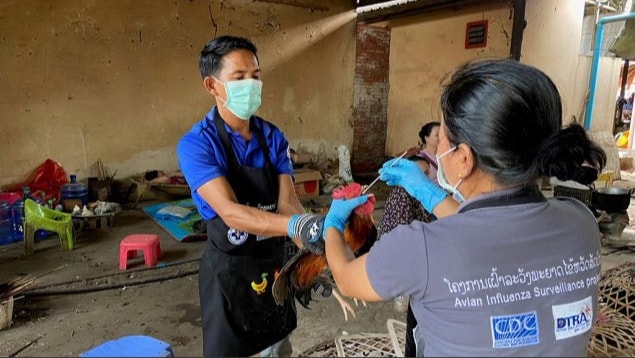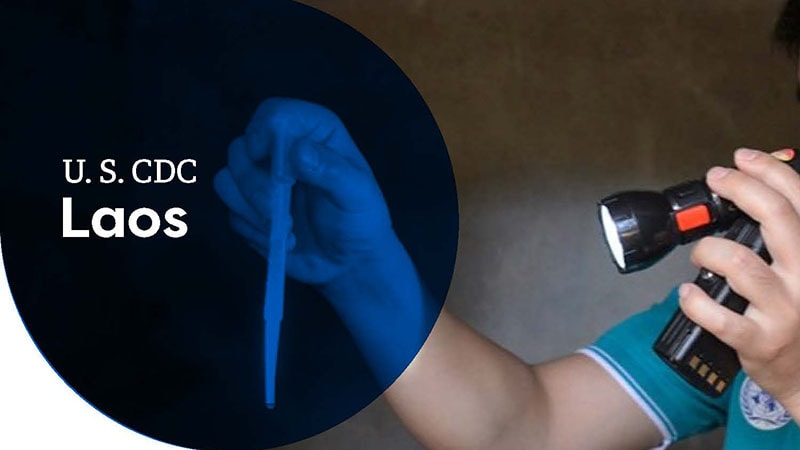At a glance
CDC has worked with partners in Laos for over 18 years. CDC works with the Lao Ministry of Health (MOH) to address HIV and influenza. They also collaborate to strengthen laboratory systems, surveillance, and workforce capacities to respond to disease outbreaks.

Overview

CDC has worked with partners in Laos since 2006. CDC Laos works closely with the Lao Ministry of Health (MOH) to address the following public health areas:
- Health systems strengthening
- HIV
- Tuberculosis (TB)
- Influenza
- Emerging health threats
Global health security
Strategic focus
CDC works with local, regional, and global organizations to support emergency response, surveillance, laboratory systems, and workforce development. These efforts help bolster Laos' ability to prevent, detect, and respond to infectious disease outbreaks before they become global epidemics.
Workforce development
CDC provides technical support to strengthen epidemiology capacity through the Field Epidemiology Training Program (FETP). The Lao FETP was established in 2009 with support from CDC and the World Health Organization (WHO). The one-year program trains disease detectives to prevent, detect, and respond to public health threats.

Emergency response
CDC's partnership with the MOH was key to building a successful COVID-19 response. CDC collaborates with multilateral and non-governmental partners in the following efforts:
- Provided laboratory technical expertise for genomic sequencing of SARS-CoV-2.
- Supported COVID-19 testing.
- Helped integrate COVID-19 surveillance into the influenza sentinel surveillance system.
- Collaborated on border health strengthening measures.
- Developed tools, materials, and guidance on how to safely continue HIV testing and treatment during the pandemic.
Border health
CDC and the MOH help prevent the spread of infectious diseases among travelers and mobile populations who cross international borders. CDC is supporting the development of a quarantine health program at key international points of entry. These include airports and land crossings on the border.
Key achievements
With CDC support, Laos has established:
- A national network of over 100 FETP graduates since 2009.
- Four internationally certified biosafety cabinet certifiers.
- Active emergency response plans for malaria and pandemic influenza.
- A One Health Program which conducts monthly avian influenza surveillance in poultry in 6 high-risk provinces. This surveillance has helped detect infections in poultry and wild birds due to avian influenza subtypes H5N1, H5N6, and H9N2.
HIV and TB

Strategic focus
Since 2009, CDC has collaborated with multilateral, governmental, non-governmental, and civil society organizations in Laos. This collaboration has driven work to implement and evaluate tools, programs, and policies to combat HIV, sexually transmitted infections, and TB. Through the U.S. President's Emergency Plan for AIDS Relief (PEPFAR), CDC supports life-saving activities to:
- Increase identification of undiagnosed HIV patients.
- Improve patients' understanding of antiretroviral treatment (ART) and increase adherence and retention to care for viral suppression.
- Expand access to treatment and viral load testing by decentralizing services to point-of-care sites.
- Strengthen clinical management for patients living with both HIV/TB or other infections.
- Improve national laboratory quality, coverage, and monitoring of HIV tests.
- Reduce HIV stigma and discrimination in healthcare settings.
- Strengthen public health workforce capacity.
- Strengthen strategic information systems.
- Support a phased transition to a sustainable government-led response.
Key achievements
- Expanded index testing service and monitoring systems to 11 ART sites, selected ART point of contact, and community-based sites.
- Established the national recent infection surveillance system with real-time reporting.
- Collaborated with the Center for HIV and STI to provide technical support for establishing and expanding point-of-care ART sites.
Influenza

Strategic focus
CDC’s influenza work includes support for:
- Monitoring and tracking the spread of influenza in humans and animals, with a focus on highly dangerous avian influenza.
- Priority seasonal influenza vaccination programs by enhancing surveillance and response for seasonal, avian, and pandemic influenza.
- Influenza laboratory and epidemiologic surveillance, early warning systems, and outbreak response.
- Increasing the use of evidence-based data to inform policy decisions for influenza vaccination programs and other prevention and control programs.
Global leader in influenza vaccine uptake
Key achievements
CDC's support has:
- Enhanced surveillance to detect and monitor threats from novel influenza A subtypes and other emerging respiratory pathogens.
- Helped evaluate state-of-the-art devices that detect influenza during site visits and help facilitate rapid response.
- Supported national rapid response trainings and cross-border exercises on responding to influenza viruses with pandemic potential.

